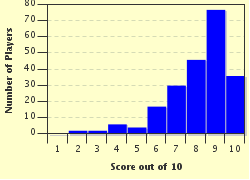Quiz Answer Key and Fun Facts
1. Our planet is named Earth, from soil, or simply the world. What was the ancient Greek name for Earth?
2. As the Earth travels in space its upper atmosphere is disturbed by solar wind in the form of electrons and protons. The result is the emission of light which is visible in areas that surround both Polar Regions. What is the name of this phenomenon in the Northern Hemisphere?
3. One of the planets of our solar system is famed for its red spot which is in fact a giant storm. Which gas giant hosts this storm?
4. This celestial body in our solar system was discovered in 1930 and was named after the Roman god of the underworld. What is the name of the scientist that discovered it?
5. Our Solar System consists of planets, some of which have moons orbiting them, asteroids, comets and other matter like dust and gas. The whole Solar System is but a small portion of a greater body called a galaxy. What is the name of the galaxy that contains our Solar System?
6. The nearest galaxy to our own is designated by the letters M31. Without putting yourself in too much of a strain what is the name of this galaxy?
7. This bear of a constellation contains an asterism with seven recognizable stars the brightest of which is Alioth. What is the name of this constellation which is the third largest in the sky?
8. This celestial body is a star cluster and it is commonly known as Seven Sisters. What is the name of this cluster which is also known as M45?
9. The Crux is the smallest of the 88 constellations and it has the distinctive shape of a kite. What is the popular name of this constellation that features on the flags of Australia and New Zealand?
10. This icy body contains dust and gases like methane and carbon dioxide. As it gets closer to the sun the ice gives out a cloud called coma. Can you deduce the name of this celestial body?
Source: Author
gme24
This quiz was reviewed by FunTrivia editor
rossian before going online.
Any errors found in FunTrivia content are routinely corrected through our feedback system.

